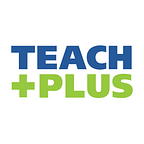To Build Inclusive Schools, Focus on Inclusive Language
By Rikelma Vargas
“Parent Night.” Many schools use these two words to describe everything from a school event to an information session about the college application process. My school too had continued its fall tradition of hosting a Parent College Night for high school seniors. However, when I reminded my students of this upcoming opportunity days before the event, I found many of them to be dismissive, shying away from the topic.
“Ms. Vargas, most of us can’t go,” Mae said to me. ‘Either we work, or our parents work tonight. In my case, my mother works evenings.” Mae did end up going to the informational session with me sitting in as her guardian. She left with a notebook full of notes and a folder filled with resources. She went on to apply to several colleges, receiving several acceptances. Everything ended well. Nevertheless, I couldn’t shake off Mae’s words to me that day. She had hit the nail on the head, possibly offering a potential solution to improve our school’s student and family engagement.
Language matters. The language we used for this event, Parent College Night, turned out to be isolating. When I shared my reflections with my school’s administration, I stressed the dangers of this exclusive language and how in many ways, it can isolate students the same way a school “father-daughter dance” can leave out students from non-traditional households. Many students decided not to go after hearing the word “parent,” deducing that they must have a parent in order to attend or felt stigmatized because of the lack of any parent in their household.
The following year, my school did something about this. The guidance department advertised the informational session as “Senior College Night,” and we saw an increase in attendance, many of our students coming to the event without a parent or guardian. While we lauded the number of school community members in the room, it was clear to me that the diverse student population in our school was not yet reflected.
In Massachusetts public schools, Latinos account for the largest-growing student population. In my own school district, Latinos make up roughly 35% of our school community. Yet, this is rarely reflected at school events. Here too, language matters. Inclusive language is about word choices, and it is also about vernacular or native languages. Many of my Latino students come from Spanish-speaking homes. Therefore, it only makes sense for schoolwide events to offer language options for this community. As a next step, I am hoping that my school will communicate the same post-secondary information night in Spanish or offers translation services.
One way to make sure we are as inclusive as possible is to bring student voice to the table. Students are our biggest resource. In the same way Mae focused my thinking, students will know how to include their peers better than adults. Most schools have a student council/government, or its equivalent. We should remember to include student voices in planning committees, conversations about flyer designs, and language. By doing so, we will have more inclusive, relatable language in our materials and be able to elevate student leadership.
When we teach perspective in history, we instruct students to analyze the language used to inform a text’s purpose and intended audience. This applies here, too. We must be intentional about language in school to be able to reach our “intended” audience: all of our students. When we pay attention to inclusive language, we pay attention to the makeup of our community.
Rikelma Vargas is a history educator. She is a Teach Plus Commonwealth Teaching Policy Fellowship alumna.
